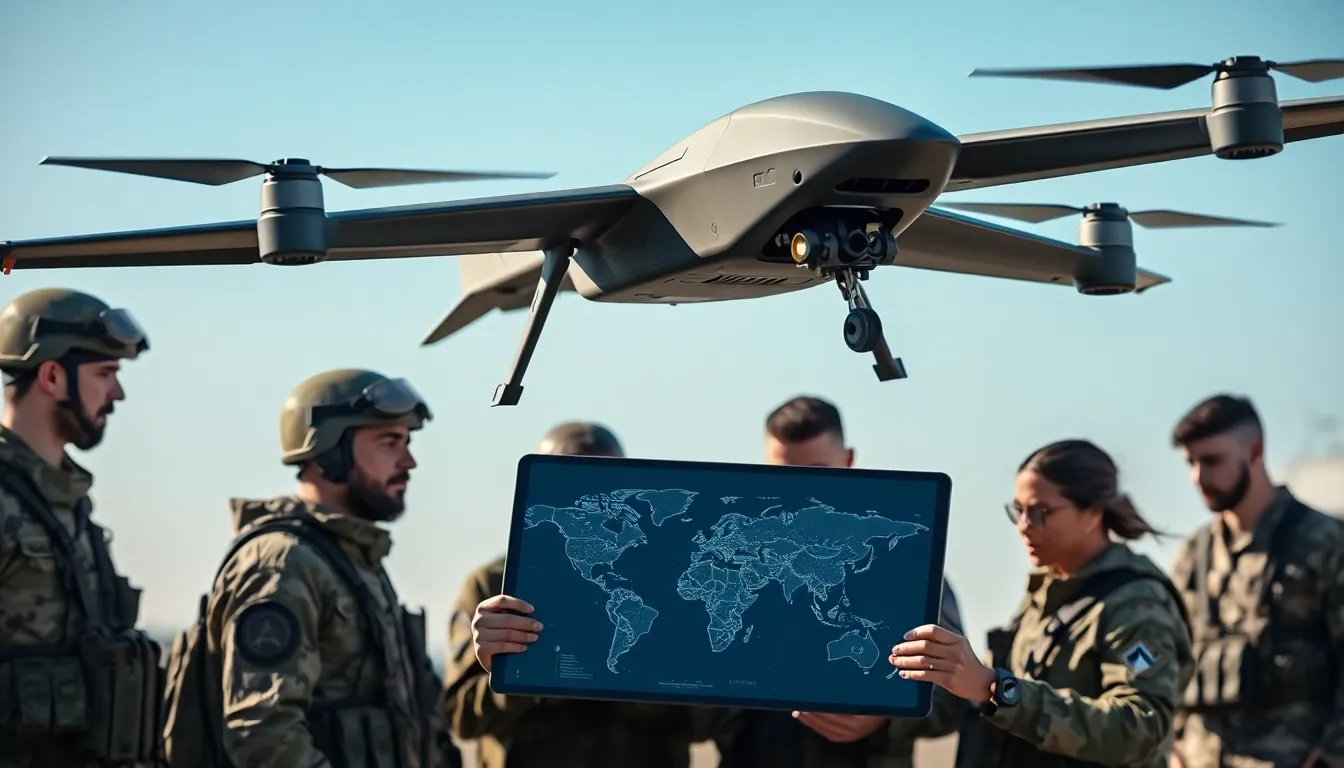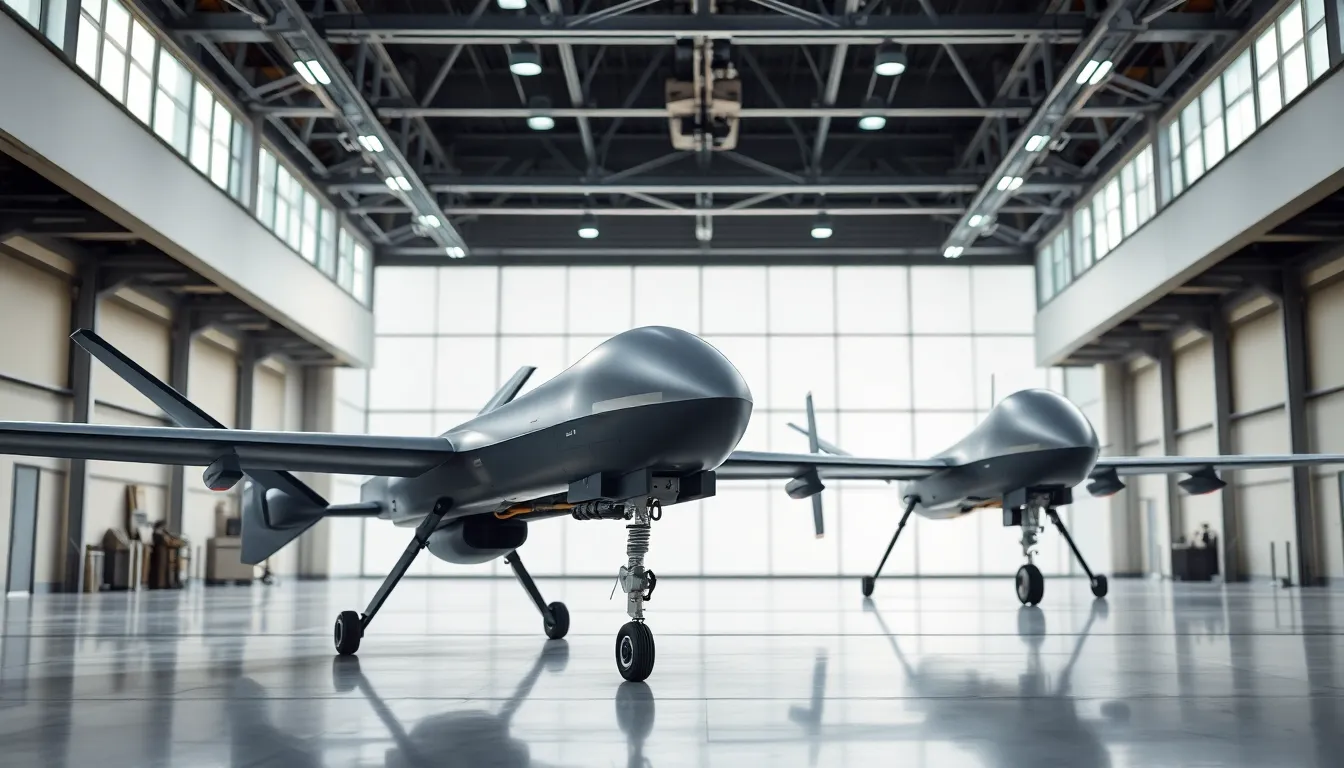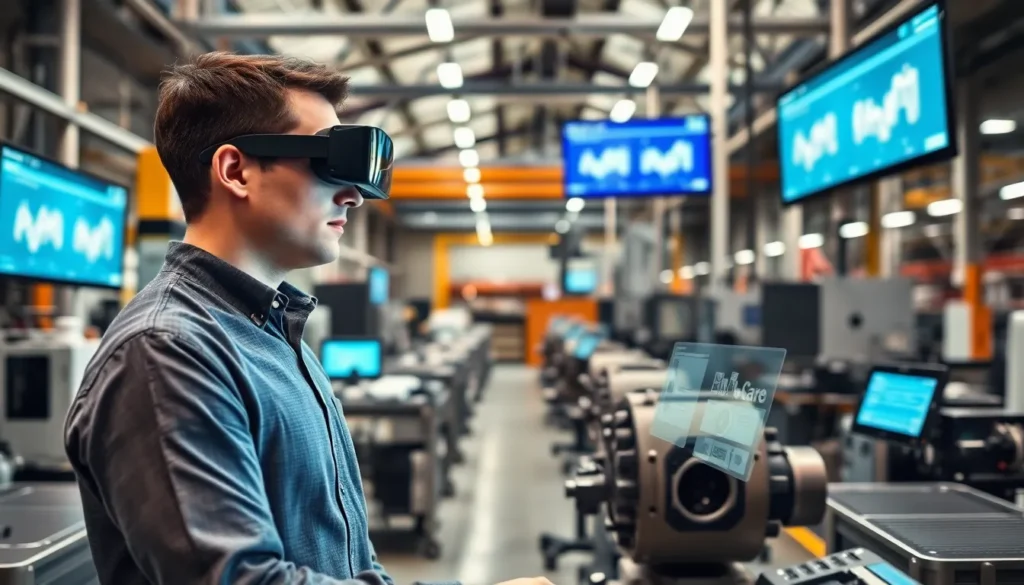Ever wondered if military drones are the size of a small car or a hulking aircraft? Strap in, because we’re about to jump into the intriguing realm of military drones. From surveillance missions to combat applications, these flying machines come in all shapes and sizes. Spoiler alert: you might be surprised by what you find. Let’s unpack the dimensions of these cutting-edge technologies and discover why size matters.
Table of Contents
ToggleUnderstanding Military Drones

Military drones, often referred to as unmanned aerial vehicles (UAVs), have revolutionized how modern warfare is conducted. Unlike traditional piloted aircraft, these drones can fly autonomously or be controlled remotely. They serve various roles, including surveillance, reconnaissance, and combat. Drones provide real-time information, crucial in critical operations, making them an indispensable asset for armed forces across the globe.
Types of Military Drones
The military employs several types of drones, each designed for specific missions. Broadly, they can be categorized into:
- Reconnaissance Drones: These are designed for intelligence gathering and monitoring enemy positions. They typically have a smaller profile to evade detection.
- Combat Drones: Equipped with weapons, combat drones can conduct airstrikes from heights that are often unreachable for standard aircraft.
- Cargo Drones: These drones transport supplies and equipment to remote locations. Their larger size allows for heavier payloads.
- Surveillance Drones: With sophisticated cameras and sensors, these drones monitor vast areas and provide real-time data to ground forces.
Interestingly, each type has its own size parameters, based on mission requirements.
Size Comparison of Different Models
The size of military drones can vary dramatically based on their purpose.
For instance:
- Predator Drone (MQ-1): This well-known UAV measures about 27 feet long, with a wingspan of 55 feet. It’s primarily used for intelligence and strike missions.
- Global Hawk (RQ-4): Larger and more advanced, the Global Hawk boasts a length of around 44 feet and a wingspan stretching nearly 130 feet. It’s primarily used for high-altitude surveillance.
- Switchblade Drone: A compact, loitering munition, the Switchblade is only about 2.5 feet long, designed for pinpoint strikes, showcasing how range can vary with size.
Such comparisons highlight how diverse military drones are, adapting in size according to their operational needs.
Factors Influencing Drone Size
Several factors play a crucial role in determining the size of military drones.
- Purpose: The mission objective heavily influences size. A drone designed for combat may require more robust systems, increasing its mass compared to a surveillance model.
- Payload Capacity: Larger drones carry heavier and more sophisticated equipment, such as advanced sensors or weapon systems, necessitating a bulkier design.
- Operational Environment: Drones intended for desert operations might differ in size from those used in urban settings, with considerations for durability and maneuverability.
- Technology Incorporation: As technology advances, the integration of new systems can either enlarge a drone (to fit in more gadgets) or compact it (making it more efficient in space).
Understanding these factors sheds light on why some drones are sizeable while others are deceptively small.
Applications and Their Size Requirements
Military applications dictate specific size requirements for drones.
- Surveillance Missions: Larger drones like the Global Hawk can cover extensive areas and remain airborne for prolonged periods, making them ideal for reconnaissance.
- Combat Missions: In contrast, smaller drones such as the Raven are nimble and designed for immediate-on-the-ground missions. Their compact size allows them to be deployed quickly in tight spots.
- Support Roles: Cargo drones need generous storage space, enabling them to transport equipment and supplies effectively, maximizing their operational size.
Each application demands unique specifications related to size, emphasizing the necessity of choosing the right drone for the task at hand.
Future Trends in Military Drone Sizes
As technology continues to advance, the sizes of military drones are likely to evolve significantly. Emerging trends suggest:
- Miniaturization: As technologies become more compact, expect smaller drones capable of performing complex missions typically assigned to larger models.
- Hybrid Designs: Future models may feature designs that allow drones to adjust size or capacity based on mission requirements, combining benefits from both small and large UAVs.
- Swarm Technology: Smaller drones working collaboratively as a swarm can compensate for their size limitations, increasing their operational capabilities while maintaining stealth.
These trends indicate an exciting future in military drone technology, where size may become less of a limitation and more of a customizable aspect.





